How to do a keyword research in 4 steps (Keyword Research)
How to do a keyword research in 4 steps (Keyword Research)
We show you 6 free tools to filter the most popular keywords in your industry and attract more organic traffic

The first step to climb positions in Google is to carry out a keyword study (Keywords Research). This is the basis of any SEO or SEM strategy that we want to develop. For those who are not familiar with this process, we will explain in detail what keywords are , how to do a keyword analysis for our business and what tools can help you with this process.
First of all … Why do I need a keyword study?
We will answer this question with another: how do you know what information your audience needs?
When building a content strategy, it is extremely important to know the needs of the Buyer Persona at each stage of the purchase process. If you want to attract sales opportunities, you must share valuable information for your target audience.
How do we discover those needs? Asking Google. The famous search engine receives an average of 3.8 million queries every minute . If there is data that shows what users are looking for the most by region, type of business and season, Google has it.
At this point, it is convenient to clarify what keywords are . Basically, they are the terms that users use in search engines (such as Google, Bing and Yahoo) to make their queries.
So, doing a keyword analysis involves searching and identifying the terms associated with our industry or business, which have the highest number of searches per month on Google.
The correct interpretation of this data will allow us:
- ✔ Understand what information users need
- ✔ Know what content will attract more readers and sales opportunities
- ✔ Organically position the website on the first pages of Google
- ✔ Detect new niches in the business
- ✔ Avoid high bounce rates
- ✔ Rule out economic losses
- ✔ Evaluate the performance of the competition
- ✔ Capture qualified leads
- ✔ Increase conversions
Types of keywords (keywords)
Before conducting a keyword study, you need to recognize the types of keywords that you will find on the internet. We can categorize from two perspectives: according to the user’s intention and according to the volume of searches.
According to the user’s intention
Informative: The user uses this type of keywords to obtain information on a certain topic. A good example is: Life insurance in Peru.
Transactional: The objective of those who use transactional keywords is to buy. For this reason, they tend to be much more specific. For example: “ Life insurance prices in Peru ”.
Navigation: Are those that refer to specific websites. Like ” Facebook “, ” Amazon ” and the like.
According to the volume of searches
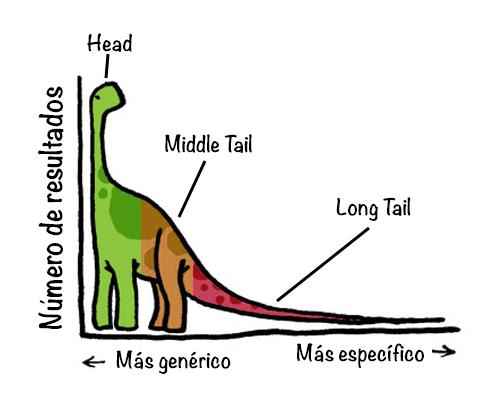
Head or short-tail keywords: These are terms normally made up of one or two words, which cover very broad topics and have millions of monthly searches. For example: Houses, cars, shoes.
Middle Tail or Middle Tail keywords : They usually have two or three terms in their composition. They are a bit more specific but they also have thousands of searches per month. For example: ” Houses in Miraflores “, ” Ford cars “, ” Nike shoes “.
Long Tail or long tail keywords: Finally we come to the specific terms. They are widely used for transactional inquiries because the user occupies them when he intends to buy. For example: “House prices in Miraflores ”, “ Used Ford cars in Lima ”, “ Red nike shoes ”.
What type of keyword is best for my website?
This is a very important question. It’s easy to assume that the words we need are the ones with the highest volume of searches. But this is a tremendous mistake.
Short tail keywords have extremely high competition. If your website is just getting into Google, it will hardly beat the titans of the first three pages of results.
Also, it is proven that short tail keywords attract a large audience, but generate less conversions than a long tail.
Taking advantage of the Long Tail is the key for your website to make space in the Google results. Being low competition, you can position many more terms and appear for other searches. And also, when considered transactional, there is a greater possibility of successful closings. And that is our goal.
Let’s show it with an example:
Let’s say we manage a dealership account and we manage to position the keyword “ cars ”, which has 23 thousand monthly searches in Peru. Sure we will have a lot of traffic, but in most cases there will be no purchase intention behind. In contrast, the keyword “ 2020 kia cars ” has only 10 monthly searches, but those visitors are likely to generate a much higher conversion rate.
How to do a keyword study? (Keyword Research)
Now that we know what keywords are and understand their ranking, we are going to explain step by step how we carry out keyword research for our clients.
Step 1: Identify the most important keywords
For this first step, we don’t need any tools. We just need to organize our ideas and answer a few very basic questions.
- → What does the business do?
- → What do you sell?
- → What services does it offer?
- → What is the basic profile of your Buyer Personas?
- → Do you have a physical store or an office?
How do these questions help us? We will show you with another example.
- ✔ What does the business do ?: Life insurance
- ✔ What do you sell ?: Health insurance, travel insurance, vehicle insurance.
- ✔ What service does it offer ?: Cancer insurance, Soat digital.
- ✔ Do you have a physical store or office ?: Yes, in Lima.
From this simple exercise we come up with an important list of keywords:
- ✔ Life insurance
- ✔ Health insurance
- ✔ Travel insurance
- ✔ Vehicle insurance
- ✔ Cancer insurance
- ✔ Life insurance in Lima
- ✔ Health insurance in Lima
- ✔ Travel insurance in Lima
Step 2: Group your keywords by categories
At this point, you need to work with an excel sheet. We are going to take the previous keywords and create categories. This is very important to develop a healthy internal linking architecture. In addition, it will help a much more effective web positioning.
If you want to know more about how to create an SEO positioning strategy from scratch, we recommend our guide for beginners.
Continuing with the previous example, we can start with the following categories:
- ✔ Health insurance
- ✔ Vehicle insurance
- ✔ Travel insurance
And starting from there, we feed our study of keywords.
Step 3: Expand the list of Keywords
You may not have noticed it, but the keywords that we detected in our first approach are Head and Middle Tail. If we are starting in the world of SEO, it is advisable to delve into Long Tail terms that can feed these categories.
For this task, we will extend the keyword analysis. Now we will need a tool to help us detect the Keywords used by our potential customers on Google. We use Ahrefs , which is a fairly complete tool. But there are many other very good options:
- ✔ Ubbersugest
- ✔ MergeWords
- ✔ Google Keyword Planner
- ✔ Keyword Difficulty Tool (Semrush or MOZ )
- ✔ Google Trends
- ✔ Keywords Everywhere
The main ally of SEO specialists is Google itself.
This search engine suggests keywords to us as we write our queries. And the ideas it proposes are those that have the highest volume of monthly searches.
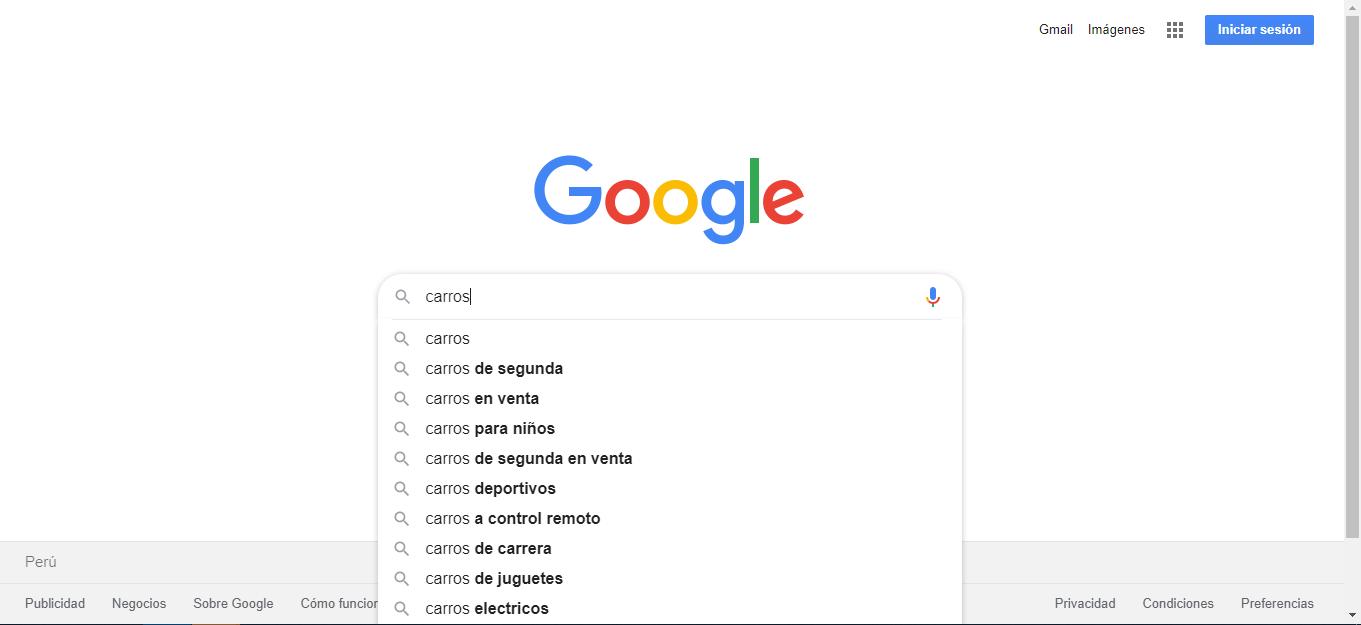
Also, after launching the first page of results, put in the footer a list with the most popular terms associated with our search. This gives us good ideas to feed our keyword study.
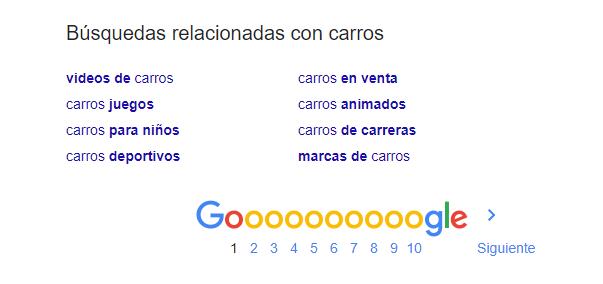
Übersuggest
This is one of the best tools that exists on the internet and it is completely free. In addition, it is designed so that beginners can understand how it works.
By simply placing the main keyword in the search bar and selecting a country for the crawl, Ubersuggest offers us a very complete list of combinations, their respective search volumes and even shows data on the difficulty of positioning.
It also offers content insights, basic SEO audits, backlink analysis, and search statistics.
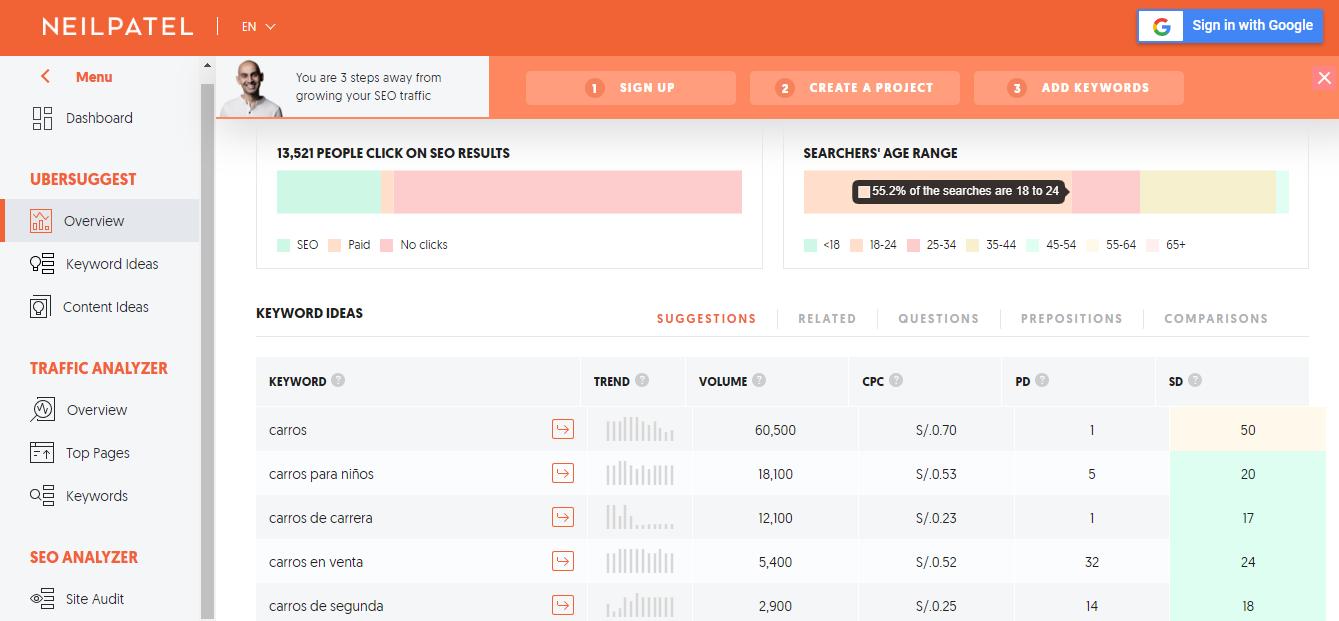
Merge Words
This is another free and very useful tool. Especially for keyword matching. Merge Words has three boxes, in which we will place classified keywords (For example: Vehicle type + make + year). In response, the program will throw all possible combinations at us.
The not-so-positive part of this trick is that we need to debug the list later, in case some combinations don’t make sense.
Google Adwords Keyword Planner
Once we have a significant number of keywords in our excel, we will take a very important next step: find out which of these Keywords will really attract traffic to our website.
To do this, we will use Google’s keyword planner. We select the option to ” show only ideas directly related to my search terms “, we copy the list of Keywords that we organize in excel and analyze the results.
We organize the data that the system returned, ordering by volume of local searches. We can download that file in CSV.
Then we separate the text into columns (data> text into columns> choose the delimited option> commas) and that’s it. We only have to delete the columns that are not necessary for our keyword analysis and we order from highest to lowest.
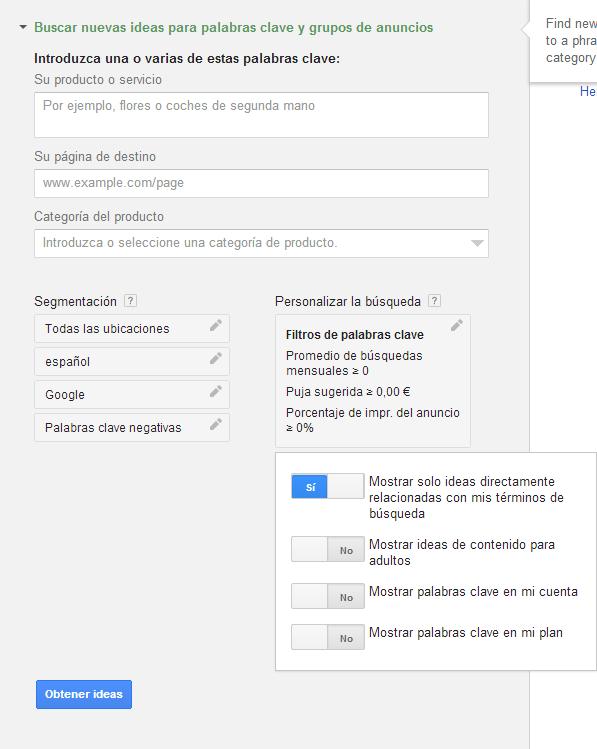
Keyword difficulty tool (Semrush or MOZ)
The next thing we need to evaluate is the difficulty of positioning. The Semrush and MOZ software have a tool for this, which is called the Keyword difficulty tool.
These show us how many backlinks the website should have and how much authority domain is necessary for our page to reach the top places in Google results.
To do this, we just copy the keywords, paste them into the tool and choose the language. The search results can also be downloaded in CVS to add additional information.
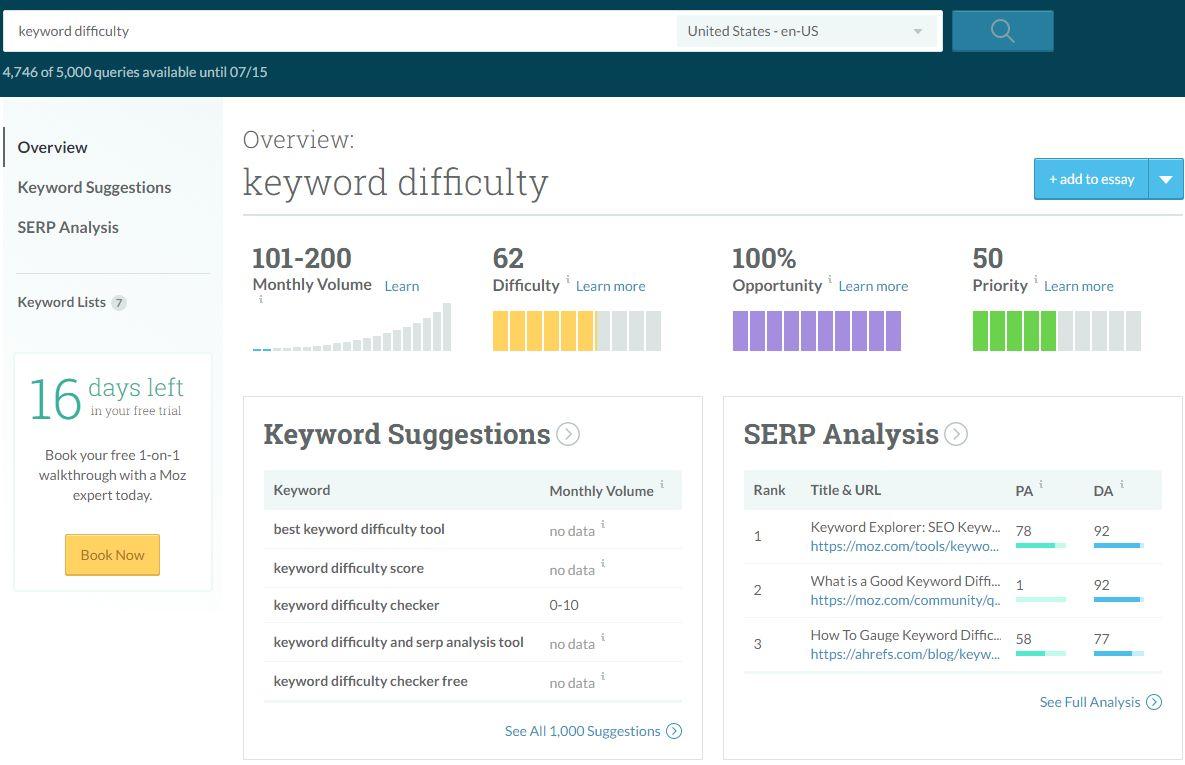
Google Trends
Finally, if our portal is for news and information, Google Trends can be very helpful. This tool shows the trending topics at each time of the year. In this way, we can find useful content for our blog.
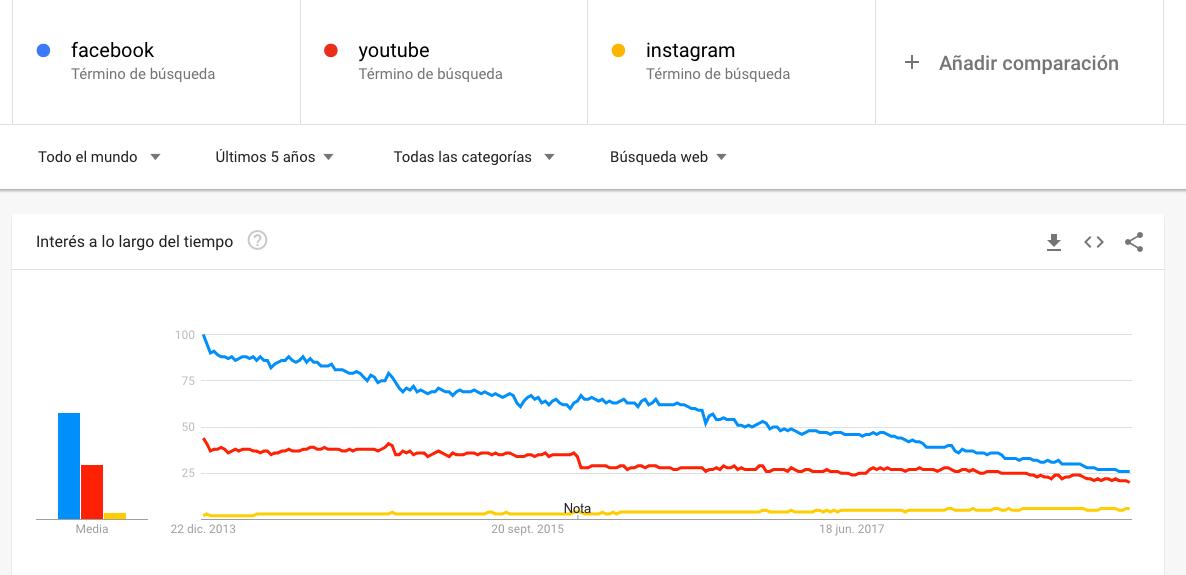
Keywords Everywhere
This Chrome extension allows you to see the most popular keywords for each search you do on Google. Although it does not show statistics, it does show a great variety of keywords and associated terms.
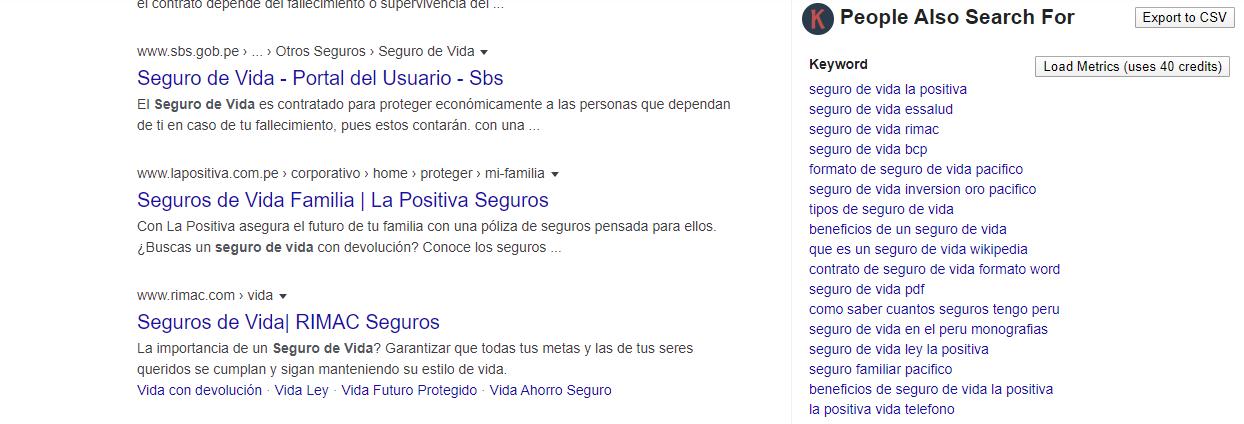
Step 4: Add synonyms and related terms
The Google algorithm increasingly identifies the relationship that words have with each other, when they are used on the same web page. It is an indicator of content quality. Hence the importance of playing a little more with semantics to improve SEO positioning.
Add synonyms and alternative words to your list. In this way you will avoid using the keyword too many times and you will have a much better written content.







